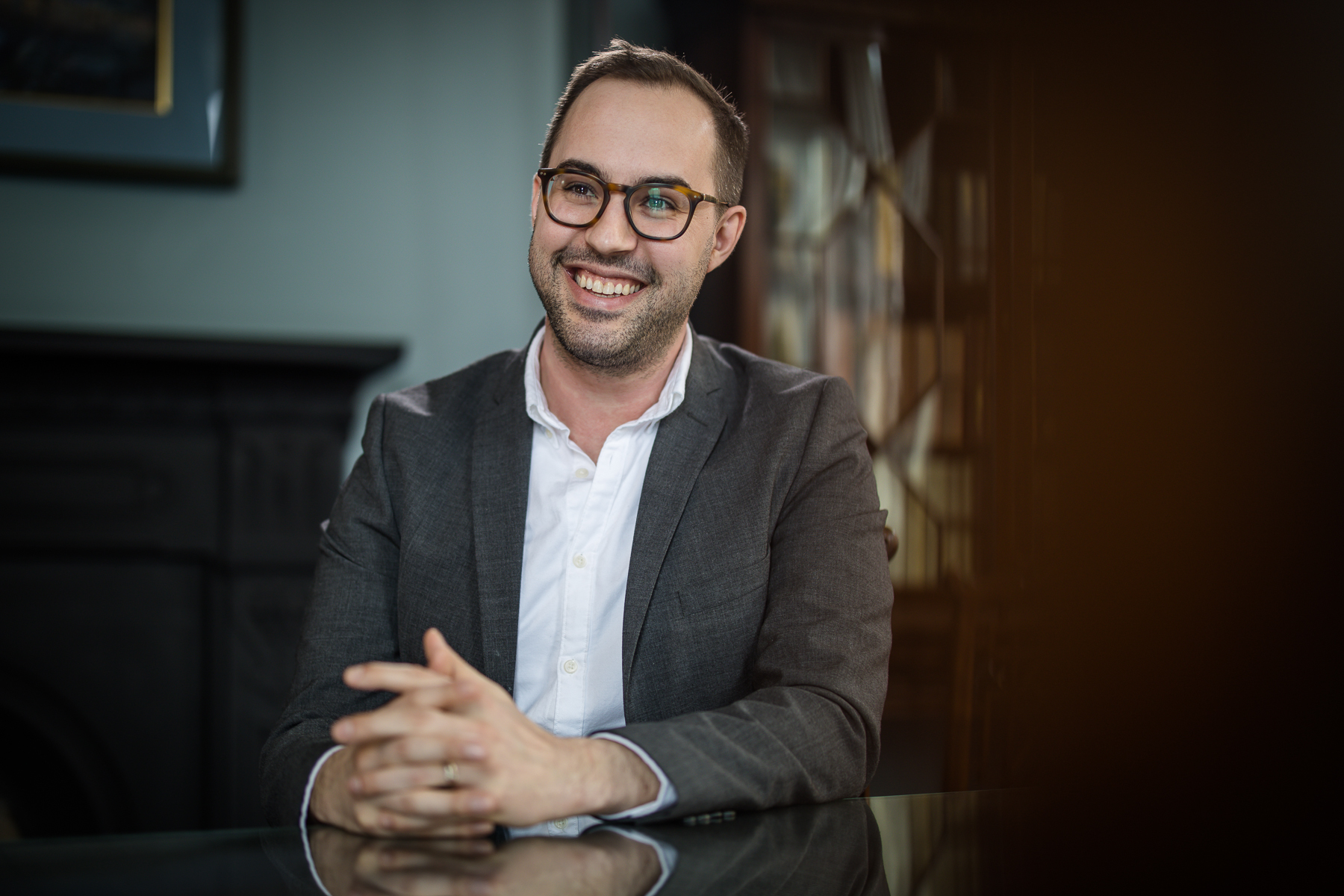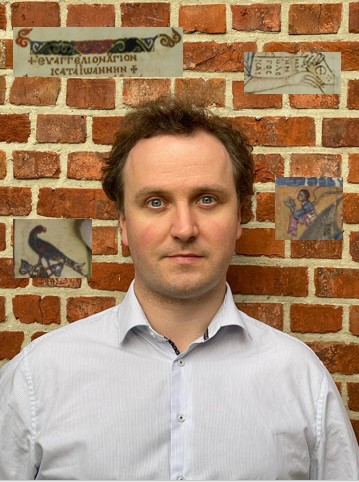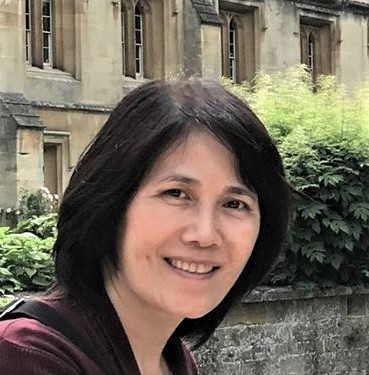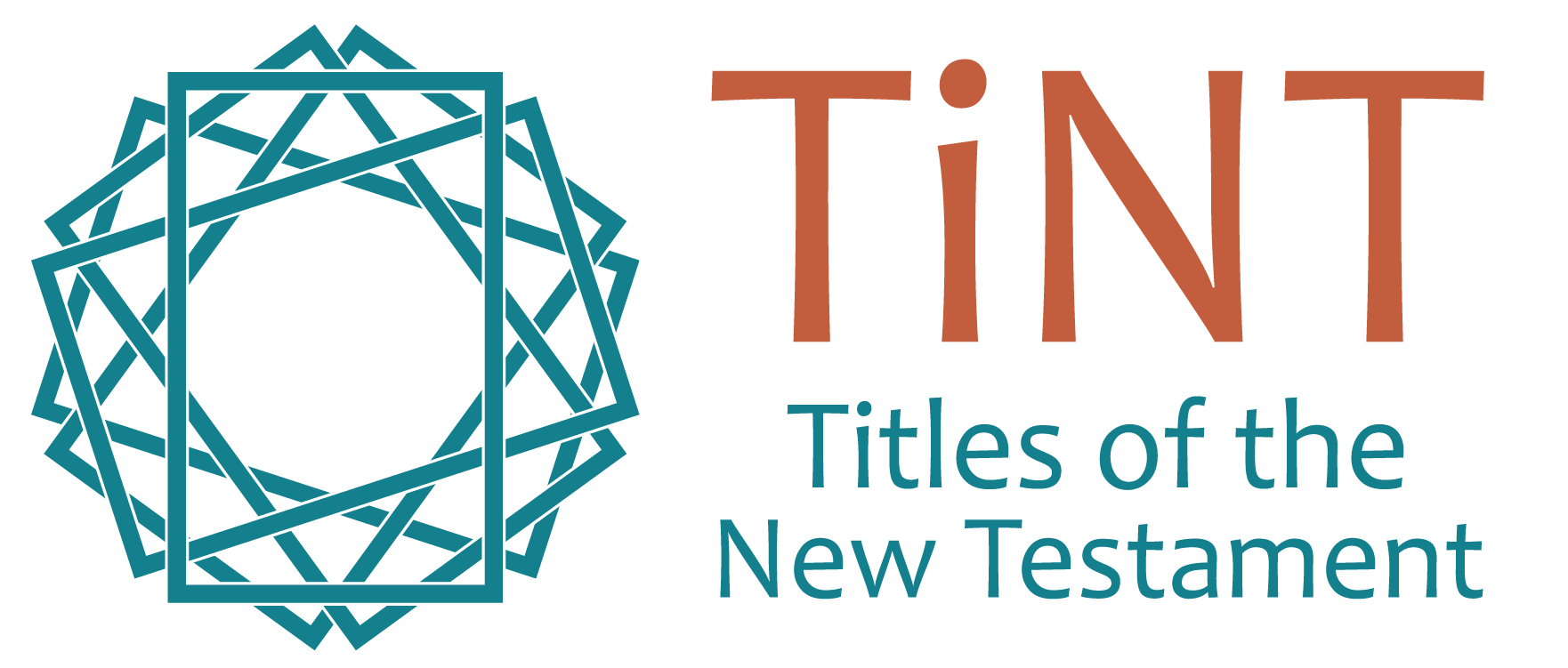Team
Principal Investigator

Garrick Allen
Garrick V. Allen (PhD St Andrews, 2015) is Senior Lecturer in New Testament Studies at the University of Glasgow. He is the author of Manuscripts of the Book of Revelation: New Philology, Paratexts, Reception (Oxford University Press, 2020) and The Book of Revelation and Early Jewish Textual Culture (Cambridge University Press, 2017), along with multiple articles, edited books, and translations. He is also the recipient of the Manfred Lautenschlaeger Award for Theological Promise (2019) and the Paul J. Achtemeier Award for New Testament Scholarship (2018). In addition to the TiNT project, he is the Principal Investigator on the Paratextual Understanding project, funded by the Templeton Religion Trust.
Garrick’s work on the TiNT project revolves around the features of the Euthalian apparatus to Acts, the Pauline Epistles, and the Catholic epistles, focusing especially on the chapter lists and quotation lists in different manuscripts.
Postdoctoral Researchers

Emanuele Scieri
Dr. Emanuele Scieri is a postdoctoral researcher for the Annotating the New Testament and TiNT projects at the University of Glasgow. Previously, he was part of the ERC CATENA project at the University of Birmingham, where his PhD on Greek catena manuscripts of Acts of the Apostles led to a reclassification of this tradition, now included in the online Clavis Clavium (ClaCla) database. Author of numerous publications, he is co-authoring a catalogue of the Euthalian Apparatus in New Testament manuscripts and an edition of Codex H (GA 015) for the Annotating the New Testament project, while also preparing monographs on commentary manuscripts. He has taught ancient languages for several years in the Classics department at the University of Birmingham and contributes to manuscript transcription for the International Greek New Testament Project and the Insular Latin Gospels transcription project

Maxim Venetskov
Maxim Venetskov (Phd Paris-Sorbonne, 2018) is Research Assistant in the School of Critical Studies within the College of Arts at the University of Glasgow. He has recently published extensive papers on the manuscript tradition and textual criticism in the field of Byzantine asceticism and Eastern monasticism (project “Longing for perfection” at KU Leuven, 2018-2022). One of his latest publications concerns the titular apparatus of the Ladder of Divine Ascent by John Climacus as it is set out in the Greek manuscript tradition. The results of his research tend to establish that an oeuvre transmitted in Byzantine manuscripts evolves in three stages of composition: Textus (piece from the author), Liber (including peritextual and paratextual elements), Corpus (containing additions from the reception).
For the TiNT project, Maxim is focusing on two main directions in the examination of manuscripts of the Gospels and apostolic writings: (1) retracing the development of paratexts in order to identify manuscript models through textual criticism and (2) highlighting specificities of different copyists, various layouts in order to determine geographical and cultural milieux through codicological and palaeographical analyses. Another point of Maxim’s study is to inventory liturgical marginalia aiming to define the practical use of the New Testament books in the Byzantine Church. He also compares the paratextual system in Greek manuscripts with that presented in codices containing Syriac and Slavonic translations.
PhD Students

Lily Su
Lily T. Su is a PhD student in Theology & Religious Studies, and a team member of the TiNT project under the supervision of Dr. Garrick Allen. Lily completed her MDiv degree in Advanced Biblical Languages with honors from Shepherds Theological Seminary (USA) in August, 2020. Her work on the Greek Paul Project with the Museum of the Bible Scholars Initiative includes transcribing manuscripts of 1 Timothy, 2 Timothy, and Titus for the Editio Critica Maior edition of the Pastoral Epistles.
Lily’s work on the TiNT Project involves collecting the various forms of the title as they appear in the Greek manuscripts to produce titular profiles for the manuscripts using the TiNT Project editorial tool. Her contribution to the TiNT Project is to explore the reception of authorship, date, and context of production of the Pastoral Epistles, using data gathered from the New Testament’s titular traditions. The titular features of the manuscripts will provide a window into the reception history, the provenance, and the production of the Pastorals.
Project Fellows

Martina Vercesi
Martina Vercesi is a a research associate at the Research Unit Biblical Studies of KU Leuven’s Faculty of Theology and Religious Studies. She is a member of the Leuven Multilingual Manuscript Research Centre (LEMMA). Martina is working for the ERC-2021-COG project “BICROSS– The Significance of Bilingual Manuscripts for Detecting Cross-Language Interaction in the New Testament Tradition”, led by Prof. Dr. Dr. Christina M. Kreinecker. She is currently studying the bilingual Greek and Latin New Testament manuscripts, with a particular focus on “Western” readings.
Martina earned her degree in Classics from the Università degli Studi di Milano, where she began working on textual criticism and the Synoptic Gospels. She pursued a PhD at the University of St Andrews (2022) under the supervision of Prof. Mark W. Elliott, concentrating on the text and interpretation of Revelation 19-21 within the context of ancient North African Christian communities.
In 2021, Martina relocated to Glasgow to work on the ERC project “Titles of the New Testament: A New Approach to Manuscripts and the History of Interpretation” (TiNT), led by Prof. Garrick Allen. Within this context, she has focused on the diachronic development of paratextual traditions related to the gospels, while also examining the interactions between Greek and Latin in New Testament manuscripts. Her research interests encompass manuscripts, textual criticism, the Latin New Testament, the Gospels, and the Book of Revelation.

Kimberley Fowler
Formerly a post-doctoral researcher on the TiNT project, Kimberley A. Fowler (PhD, Manchester 2013) is now Assistant Professor of New Testament at the University of Groningen. She has also held teaching and research positions in New Testament and early Christianity more broadly at Durham University (2018 - 2021) and the Centre national de la recherche scientifique (2015 - 2018). She is the author of various articles and studies on topics in the broad area of early Christianity, especially the texts from the Coptic Nag Hammadi Codices, with a focus on the production and reception context of the manuscripts and what this reveals about diverse early Christian reading practices. Her research at present continues to focus particularly on both canonical and non-canonical Christian literature, especially the paratextual features across Coptic and Greek manuscripts on both sides of the canonical boundary.
You can find out more about her work here.

Kelsie Rodenbiker
Kelsie Rodenbiker is a Research Associate at the University of Glasgow where she is co-I on the Paratexts Seeking Understanding project. Her work focuses on margins and boundaries: paratextuality and the fluidity of the New Testament manuscript tradition; authorship, the canonical process, and the porousness of biblical authority; and textual relationships that create pathways between works and their interpretive and traditionary afterlives. Her first monograph, Scriptural Figures and the Fringes of the New Testament Canon, will be out in early 2025.
